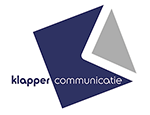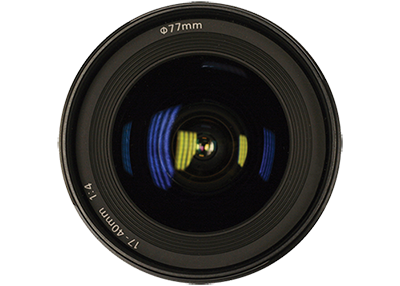The latest report (see literature list) on influencer marketing from Marketing Week showed that 84% of all marketers find it a challenge to determine the ROI of influencer marketing. Despite this challenge, marketers generally believe that influencer marketing is an effective strategy to bring products and services to the attention of consumers. And that’s not without reason, as recent research showed that 77% of all consumers worldwide take action after seeing a recommendation on social media from friends, family or acquaintances. This could imply that bloggers and vloggers who have become known on social media would be more effective than celebrities who do not derive their reputation from social media (such as from their profession or other media, but who are active on social media).
In the current research literature, people who have grown up on social media (such as Anna Nooshin and Nicky de Jager) are referred to as non-traditional influencers; people who enjoy public recognition by means of their profession (sportsman, actor, musician, TV presenter, etc.) or other media and are active on social media are often referred to as traditional celebrity influencers. Marketers and researchers often assume that non-traditional influencers are more effective to use in campaigns because they would be more credible and authentic and they belong to the group of young people they trust (ingroup). But is that also the case? Recent research shows that this is not always the case.
Let’s first determine why both types of influencers are able to influence consumers. Influencers can transfer the meaning they have acquired to a brand when they recommend products or services. For example, the expertise of an influencer can play a decisive role in enticing consumers to buy games. In another case, the physical attractiveness of an influencer can play a decisive role in tempting consumers to buy, for example, beauty products. Research shows that it is important that there is a match/fit between the influencer and the endorsed product, otherwise there will be no transfer of meaning. But does this transfer of meaning take place and how do influencers convince consumers? This process can be explained using the Social Influence theory.
This theory identifies two mechanisms that can play a role in changing consumers’ attitudes and behaviours in response to an influencer’s message, namely through internalization and/or identification. Internalisation of an influencer message occurs when the influencer is associated with credibility. Characteristics such as expertise, trustworthiness, authenticity and goodwill play a role in this. The consumer then adopts the influencer’s attitude and behaviour because his or her own ideas and values are in line with those of the influencer. Identification occurs when the influencer is associated with attractiveness. Characteristics such as similarity between influencer and consumer, likeability and awareness of the influencer play a role. In this way, the consumer adopts the attitude and behaviour because it enables the consumer to create a desired image of himself to the outside world. The content of the message plays a less important role. In other words, the consumer likes to be associated with the influencer and wants to show this to the outside world.
However, little is known about the difference in effectiveness of traditional and non-traditional influencers. In addition, little is known about the mechanisms that can explain the effectiveness of different influencers. But are non-traditional influencers more effective than traditional influencers?
To provide insight into this, a several studies were conducted last year (2019) in collaboration with master students of Communication Science at the Vrije Universiteit (Amsterdam) into the effectiveness of the two types of influencers: traditional versus non-traditional celebrity influencers who are in the top 10 of Dutch Instagrammers. For this purpose, 8 different experiments were conducted with different Instagram influencers (both traditional and non-traditional). Table 1 shows an overview of the bloggers/vloggers studied on Instagram. The rows show the names of the influencers who have been studied against each other in each experiment. In each experiment, half of the participants received a traditional celebrity influencer.
The research revealed that traditional celebrity influencers – especially if known from TV – are more effective than non-traditional influencers when it comes to influencing brand attitudes and buying intentions. So, when traditional celebrity influencers (known from TV) such as Nicolette van Dam, Bregje Heinen, Gwen van Poorten and Shelly Sterk are compared with non-traditional influencers such as Nina Warink, Mascha Feoktistova, Noor de Groot or Diane Leeflang, then TV presenters on Instagram are more effective.
If you contrast traditional celebrity influencers – who enjoy recognition as a model – with non-traditional influencers, then the non-traditional influencers are more effective. In the latter case, it means that non-traditional influencers such as Claartje Rose, Nienke Plas and Mascha Feoktistova are more effective than not like Kim Feenstra, Sanne Kramer and Romee Strijd. It is also striking that non-traditional influencers are not always more effective because they are more credible, as is often assumed. A blogger like Nienke Plas is both more attractive and more credible than a model like Sanne Kramer. Consumers do not only consider the expertise, reliability, authenticity and goodwill when it comes to influencing, but also appearance such as attractiveness, familiarity and similarities between influencer and consumer. On the basis of this research, it can be stated that the influence of well-known TV personalities on social media should not be levelled out. These people are often strong personal brands. They are very credibly and attractively positioned on the channels where they present themselves. And when social media users experience the presenters in the same way, they are extremely suitable for use in influencer campaigns. If you have the choice between using a model as a traditional celebrity influencer or a non-traditional influencer in a campaign, it is better to choose a non-traditional influencer. It is also concluded that both internalization and identification can play a role in the effectiveness of influencers.
Literture
- De Veirman, M., Cauberghe, V., & Hudders, L. (2017). Marketing through Instagram influencers: the impact of number of followers and product divergence on brand attitude. International Journal of Advertising, 36(5), 798-828.
- Djafarova, E., & Rushworth, C. (2017). Exploring the credibility of online celebrities’ Instagram profiles in influencing the purchase decisions of young female users. Computers in Human Behavior, 68, 1-7.
- Halima, N. B., Skandrani, H., & Ayadi, N. (2017). Celebrity Endorsement on Social Networks Sites: Impact of his/her credibility and congruence with the endorsed product, on the consumer’s information adoption and dissemination Digital Economy. Emerging Technologies and Business Innovation: Springer, Cham.
- Jin, S. V., & Ryu, E. (2018). Celebrity fashion brand endorsement in Facebook viral marketing and social commerce: Interactive effects of social identification, materialism, fashion involvement, and opinion leadership. Journal of Fashion Marketing and Management: An International Journal, 0(0), null.
- Kamins, M. A., & Gupta, K. (1994). Congruence between spokesperson and product type: A matchup hypothesis perspective. Psychology & Marketing, 11(6), 569-586.
- Kapitan, S., & Silvera, D. H. (2016). From digital media influencers to celebrity endorsers: attributions drive endorser effectiveness. [journal article]. Marketing Letters, 27(3), 553-567.
- Lee, J. E., & Watkins, B. (2016). YouTube vloggers’ influence on consumer luxury brand perceptions and intentions. Journal of Business Research, 69(12), 5753-5760.
- Ohanian, R. (1991). The impact of celebrity spokespersons’ perceived image on consumers’ intention to purchase. Journal of advertising Research, 31(1), 46-54.
- Penny, S. (2019). Proving the ROI of influencer marketing is challenging but it can be done. Marketing Week.
- Phua, J., Jin, S. V., & Kim, J. (2017). Gratifications of using Facebook, Twitter, Instagram, or Snapchat to follow brands: The moderating effect of social comparison, trust, tie strength, and network homophily on brand identification, brand engagement, brand commitment, and membership intention. Telematics and Informatics, 34(1), 412-424.
- Zhu, J., & Tan, B. (2007). Effectiveness of blog advertising: Impact of communicator expertise, advertising intent, and product involvement. ICIS 2007 proceedings, 121.











